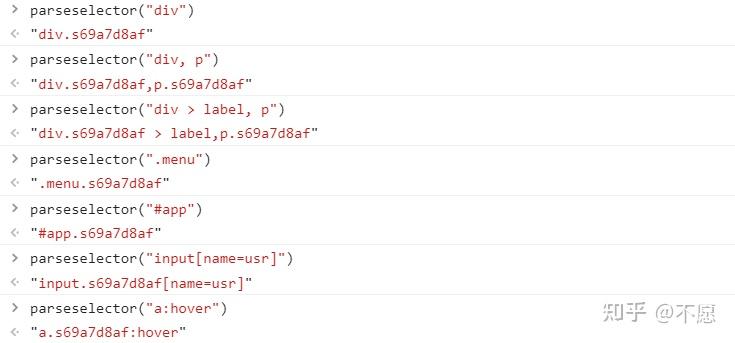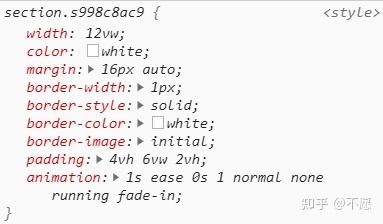reacss v1.0.4
reacss 
Binding CSS dependency in React Components
将 css 样式规则随着组件导入注入到 document 中,纯 tsx 实现。
- CSS rules contained in React Component module.
- Components depend on their own stylesheets.
- Simpler JSX serializing.
- CSS Animation & pseudo-class selector available.
- No more worring about coming up with a new className.
Idea Talk
在实际业务中,我们创造了大量的 Presentational Components 来为我们渲染 UI。很多时候,我们希望这样的组件能够表现出某种样式风格。基于其复用的需求,我们会想到对元素设置 className,然后在样式表文件中制定对应的规则。
When we design a presentational Components with a certain appearance style, it's normal to use class selector to bind css rules to the elements.
textarea.rc-MarkDown, section.rc-MarkDown {
padding: 0.6rem 1rem;
text-align: left;
font-family: var(--sans-serif);
/* more */
}
section.rc-MarkDown, {
lineHeight: 1.5;
}但是,这样带来另一个问题:按照 React 对组件复用的理念,我们希望能通过简单的 import 语句导入一个组件,在不同的环境中使用它。然而,如果我们像上面那样做,组件的样式与其渲染逻辑分离,就会面临不得不将样式文件一同导入的问题。
However, we always find that it makes our css file to long too maintain, while seperating it into independent files is not elegent, if you arenot used to tools such as scss. When we want to use the component somewhere, we cannot simply use import to get the depended style rules. That is unsuggested.
于是,我们又常常选择 css in js,把样式定义到标签里。
Thus, css in js. Define style in the jsx label, like
<section
style={
padding: "0.6rem 1rem",
textAlign: "left",
fontFamily: "var(--sans-serif)",
/* more */
}
/>这是一般组件开发时推崇的写法,但是它违背了样式的复用性,生成了很长的标签内容。
This is how we're supposed to do with React. However, it makes React to generate and differ a lots, ending up a complex (virtual) DOM element. Why don't we maintain the style as a whole rule?
另一方面,我们希望对组件使用优雅的 CSS 动画,或者操作 CSS 伪类,这就让操作样式规则成为一个应考虑的方向。
On the other hand, we hope to use CSS animation and pseudo-element selector. This is impossible without style sheets.
为了更加优雅地编写样式,我想要在使用组件的同时,让它的样式依赖也一并生效。因此,我采用添加标签的方式,动态地将 js 中的样式信息添加到文档中。(为什么使用 js 格式?在 js 的格式下,我们更容易获取样式的类型信息,包括枚举,这也符合 react 的标签语法)
To create a better approach, I wanted to find out how to validated the depended style rules as the component is used. Similarly, use className to refer a style rule, and create new CSS style rules, inject them into document, all in one. It is supported to use js style key name such as minWidth and fontFamily, because you can get enough help when programming them in a js file, espacially with typescript. It also presentates the same as React.CSSProperties.
Install
npm
npm i -s reacss
Example
Import
import { useStyleWrapper, createStyle, createAnimation, connectStyle } from 'reacss';
Step1 - Create new css rules / animation keyframes
CSS rules
Important:
This function will automatically generates a className ("s" + 8-bit hexadecimal, e.g. s998c8ac9), which is added on the elements in ths first level. You don't need to worry about taking the same selector text as you've taken in other components.
It works like:

Use
createStyleto get a property object.Better put it outside a component, and avoid using expressions when defining a rule.
Then, do what you used to do - define the CSS rules in JSX style.
const style = createStyle({ "section": { margin: "16px auto", border: "1px solid white", padding: "4vh 6vw 2vh", width: "12vw", color: "white", animation: fadeIn({ duration: "1s" }) // this is a string generator, I'll show you later }, "section label": { animation: paint({ duration: "1.2s", iterationCount: "infinite", timingFunction: "ease-in-out", direction: "alternate" }) } });
Animation keyframes
Use
createAnimation, it returns a function that receive partial config and generates formated value string foranimationproperty.Check the code above to see how to use it.
If you don't like to use generator, you can also use string yourself, just like
{ animation: "fade-in 1s" } // the first arg of `createAnimation`const fadeIn = createAnimation("fade-in", { "0%": { filter: "blur(4px)" }, "100%": { filter: "blur(0)" } }); const paint = createAnimation("paint", { "0%": { color: "rgb(30,113,164)" }, "100%": { color: "rgb(71,196,255)" } });
After this, you will get new HTMLStyleElement in the head node:

Check the first rule item of style#s998c8ac9 using dev tools:

Step2 FC (Function Component)
Use
useStyleWrapperto get a Wrapper Component, passing the return value ofcreateStyle.This container component won't create any additional DOM elements.
const BoxFC: React.FC = props => { const StyleWrapper = useStyleWrapper(style); return ( <StyleWrapper> <section> <label>Functional Component</label> <p>{ props.children }</p> </section> </StyleWrapper> ); };
It ends up like

Step2 CC (Class Component)
Solution 1: HOC
Use
StyledWrapperCCto create a Wrapper Component, passing the return value ofcreateStyle.This container component won't create any additional DOM elements.
public render(): JSX.Element { return ( <StyledWrapperCC { ...style } > <section> <label>Class Component</label> <p>{ this.props.children }</p> </section> </StyledWrapperCC> ); }
Solution 2: Decorator
If you'd rather use a decorator than a HOC, I suggest using
connectStyle, which effects withrender.This container component won't create any additional DOM elements.
@connectStyle(style) public render(): JSX.Element { return ( <section> <label>Class Component</label> <p>{ this.props.children }</p> </section> ); }